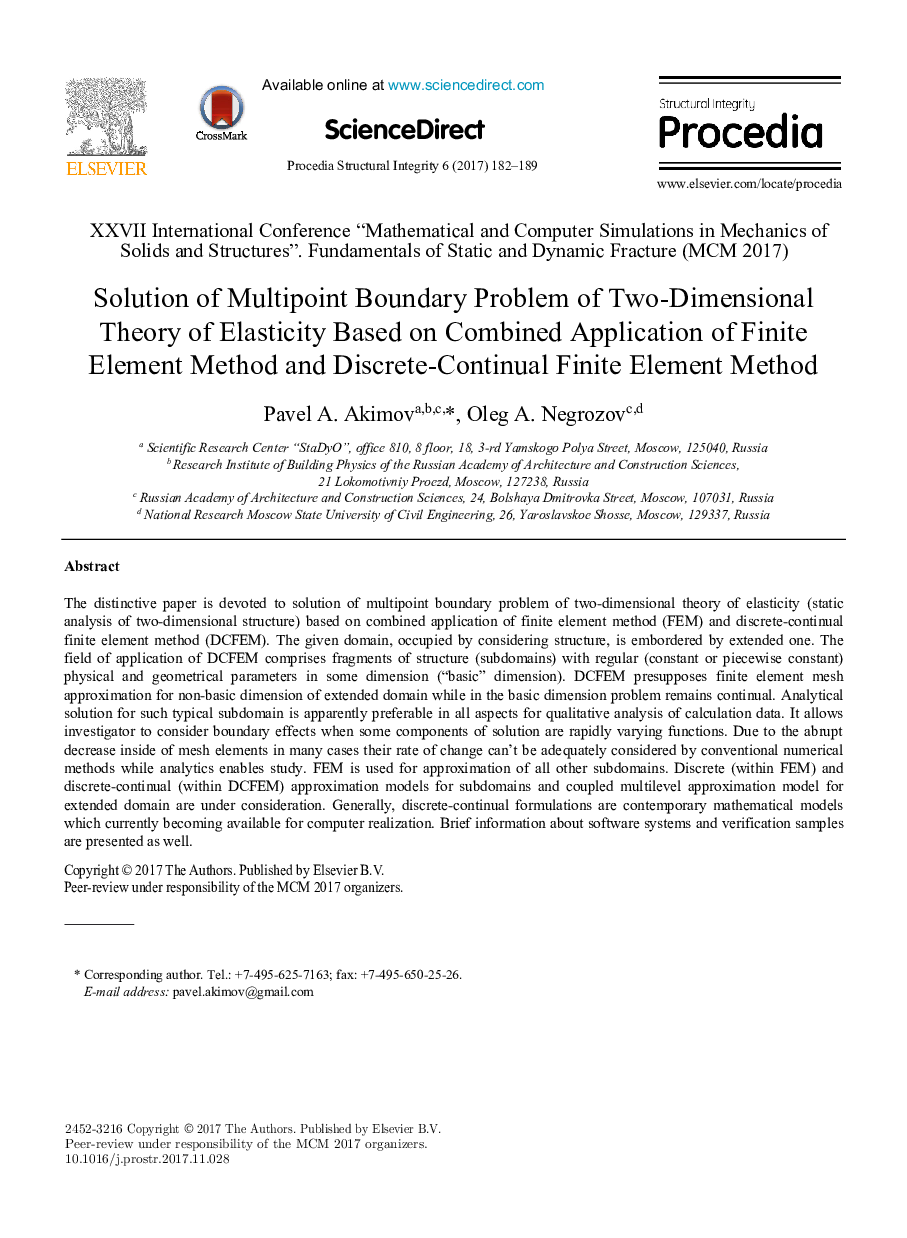| Article ID | Journal | Published Year | Pages | File Type |
|---|---|---|---|---|
| 7955051 | Procedia Structural Integrity | 2017 | 8 Pages |
Abstract
The distinctive paper is devoted to solution of multipoint boundary problem of two-dimensional theory of elasticity (static analysis of two-dimensional structure) based on combined application of finite element method (FEM) and discrete-continual finite element method (DCFEM). The given domain, occupied by considering structure, is embordered by extended one. The field of application of DCFEM comprises fragments of structure (subdomains) with regular (constant or piecewise constant) physical and geometrical parameters in some dimension (“basic” dimension). DCFEM presupposes finite element mesh approximation for non-basic dimension of extended domain while in the basic dimension problem remains continual. Analytical solution for such typical subdomain is apparently preferable in all aspects for qualitative analysis of calculation data. It allows investigator to consider boundary effects when some components of solution are rapidly varying functions. Due to the abrupt decrease inside of mesh elements in many cases their rate of change can't be adequately considered by conventional numerical methods while analytics enables study. FEM is used for approximation of all other subdomains. Discrete (within FEM) and discrete-continual (within DCFEM) approximation models for subdomains and coupled multilevel approximation model for extended domain are under consideration. Generally, discrete-continual formulations are contemporary mathematical models which currently becoming available for computer realization. Brief information about software systems and verification samples are presented as well.
Related Topics
Physical Sciences and Engineering
Materials Science
Materials Chemistry
Authors
Pavel A. Akimov, Oleg A. Negrozov,
